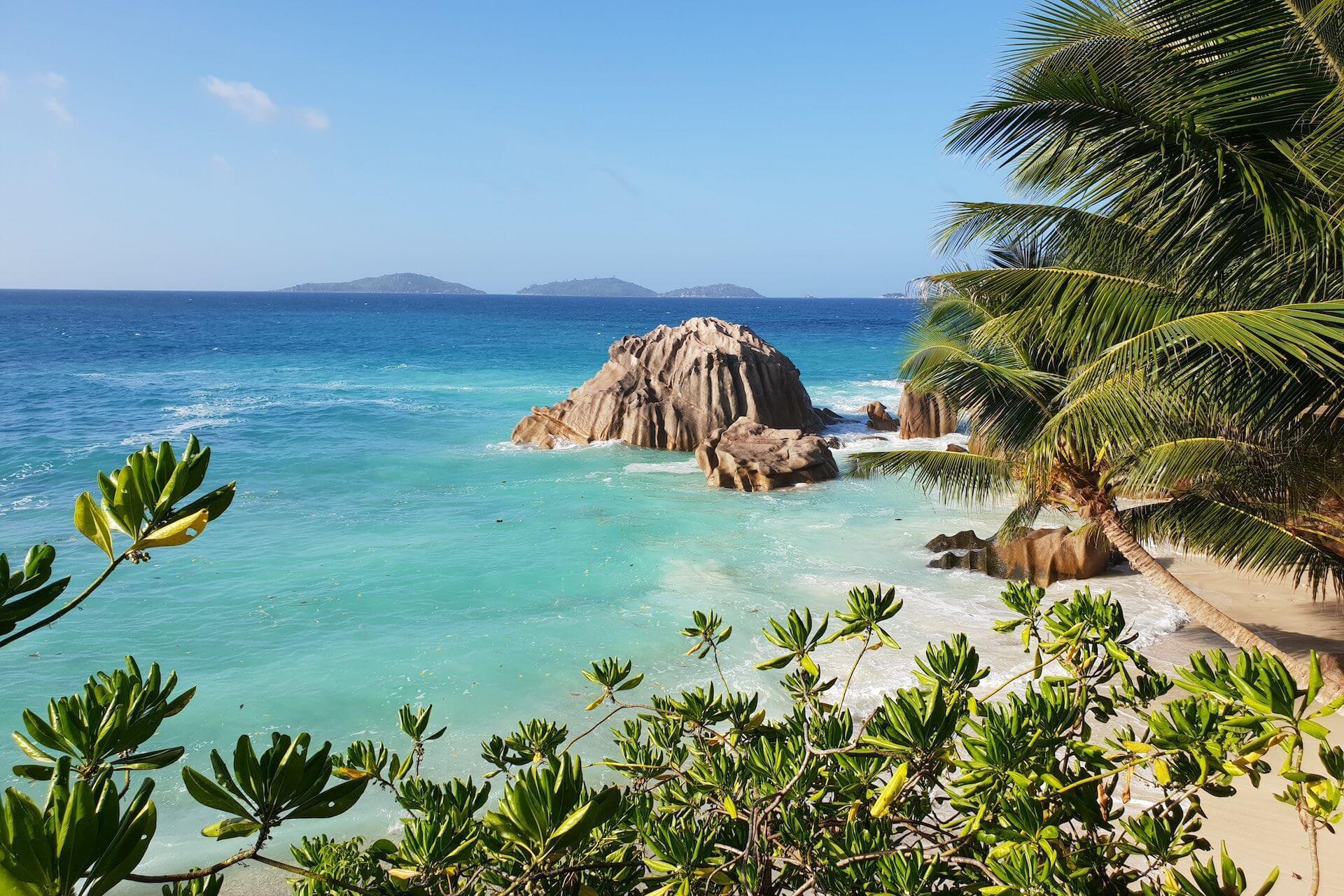A picturesque archipelago where everything runs on its own time, you will feel calm and relaxed as soon as you step off the plane. Perhaps nowhere else in the world will you find so many beautiful, empty beaches with bright white sand in one place. It's safe to say that you can explore and discover new ones every day of your trip, and not one twice. The atmosphere is unforgettably enhanced by the much-famous granite boulders and cliffs, tropical vegetation full of endemic species including half-metre high walnut trees and giant tortoises.
Seychelles and weather
The Seychelles are made up of more than a hundred small islands scattered in several groups in the Indian Ocean east of the African continent and north of Madagascar, just below the equator. The so-called inner islands are the most visited by tourists because of their accessibility. These are mostly volcanic, made up of massive granite cliffs and, in addition to the white beaches, there is plenty of greenery and hilly terrain. They include, among others, the three main islands of Mahé, Praslin and La Digue. The so-called outer islands, on the other hand, are of coral origin, and although they represent almost half of the country's surface area, they are very sparsely populated due to the lack of fresh water. If you want to get to know the Seychelles in depth and really experience it, we recommend combining visits to several islands and preferably adding some of the less accessible outer islands.
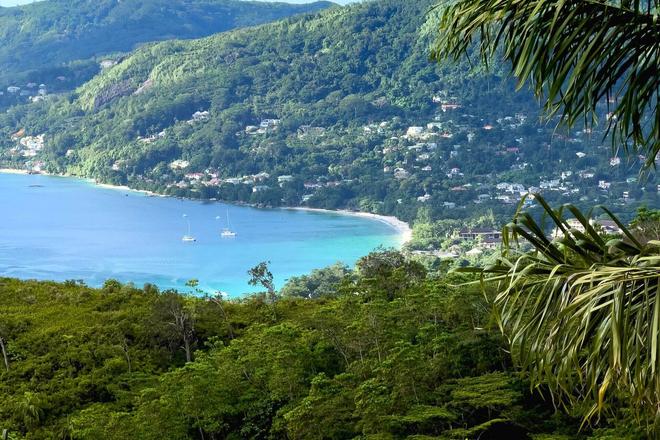
The most common is Mahé, which is the largest of the islands and also has the capital Victoria with its harbour, from which you can take a modern Cat Cocos catamaran to Praslin or La Digue. Less than an hour's ride on a giant catamaran is certainly a great experience, but with the often choppy ocean, certainly not a comfortable one. We recommend at least half a kinedryl before the trip. A more comfortable way of transportation between Mahé and Praslin is of course by plane and consequently by helicopter, which will offer you the best view of the islands.
Although the Seychelles is a year-round destination, it's a good idea to avoid December/January, when rainfall is at its highest, while May to October are among the drier months. The sea currents also change throughout the year and some beaches may have algae. This should be taken into account when planning your trip. The local population is mainly a mix of French colonists and African slaves – the Creoles. All services here work without a problem. Just be prepared in advance that the Seychellois will definitely not break for you. They simply have plenty of time for everything and the best you can do is adapt to it.
Creole cuisine
The islands are inseparable from the excellent local Creole cuisine. Strange as it may seem, a popular culinary delicacy is the Seychelles fruit bat, which is actually a giant bat, rather like an eagle in size, that feeds on fruit. So you'll find it not only in trees and in the air, but also in markets and restaurants. Another popular delicacy is seafood, such as grilled octopus with spicy sauce. If the idea of a giant bat or octopus on your plate doesn't appeal to you at all, fortify yourself with fruit, which is sure to surprise you with its taste. The small bananas that grow on almost every corner here are deliciously sweet and the carambola tastes really like carambola (the taste can be compared to a tart green apple).
Mahé, the largest of the Seychelles islands
Mahé is the largest island in the archipelago and offers great variety for travellers. The best way to explore the island thoroughly is to rent a car for a few days. You can't rely too much on local public transport. As an outsider, it's harder to know what's going where and when (the timetable isn't followed very well).
The north-east coast of the island is quite busy thanks to the capital, the port, the airport and the artificial island of Eden with its upmarket residential area and marina. The rest of the island is less densely populated and you'll find the best of the island here.
The capital, Victoria, is more of a small town and its centre can be comfortably walked through. In Victoria, visit the Clocktower, a replica of London's Big Ben, of which the locals are duly proud (a bit of a laugh for us Europeans). Also worth a visit is the Botanic Gardens in the south of the city. A little further southeast of the capital, don't miss the former La Plaine St. André plantation, home to the Takamaka rum distillery.
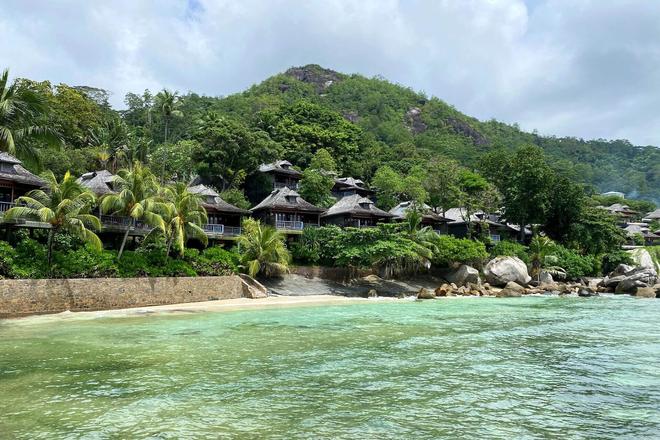
Although a large number of tourists will only head to the busier Beau Vallon beach at Mahé, the variety of beaches here is almost endless and the explorations from one to the next will keep you entertained. To the north-west lies the more interesting and wilder Anse Major beach, which is only accessible on foot by a panoramic walk of about half an hour from the village of Bel Ombre. The marine national park and beach of Port Launay are also very popular with us. Due to its location in a bay, there is no problem with algae at any time of year and the best way to enjoy the place is to stay at the Constance Ephelia Resort.
The largest concentration of beaches is in the southern part of the island, both on the west and east sides. Near the village of Baie Lazare in the west, visit Anse Soleil, Anse Gouvernement and Petite Anse. A little further towards the village of Quatre Bornes, you will find Anse Takamaka and especially Anse Intendance. Due to the dangerous undercurrents and large waves, it is not suitable for swimming, but you won't regret visiting it; it is considered one of the most beautiful for a reason. If you'd like to stay here, try the luxurious Banyan Tree resort.
Almost to the very south you will find the beautiful and wild Anse Bazarca. On the way back, head east to Anse Forbans and also Anse Royale, where the snorkelling is very good.
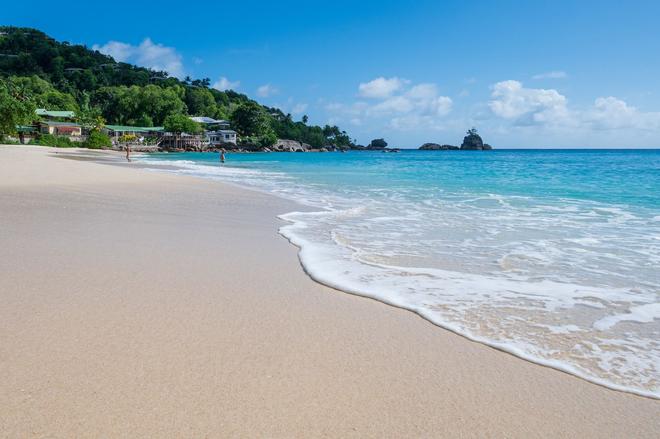
If you don't mind the high humidity and heat and want to be a little more active, head to the lushly vegetated Morne Seychellois National Park. Between the capital and Port Glaud there is a ten-kilometre long Sans Soucis road, from which we recommend making several interesting excursions. The first is a hike up to the Copolia plateau, from which you can see the capital, the residential area of Eden and the adjacent islands to the north-east. You can also admire the endemic yellow carnivorous plant eagerly awaiting its prey.
A little further on to Port Glaud you will find the turn-off to the next stop – Mission Lodge. This was once the site of a missionary school, but today the place is known for its fine views and the possibility of a short walk. For us, though, the best hike is definitely the hour-long trek through the misty forest to Morne Blanc (675m). Set off early in the morning, before the mountains are shrouded in cloud, to enjoy the views of the west coast. Right at the start of the hike, you'll pass tea and lemongrass (lemon scented) plantations. Mahé also hides several waterfalls. On the west coast at Port Glaud, a short walk takes you to the Sauzier waterfall, under whose cascade you can enjoy a dip in a small lake.
On Praslin, the palm trees love the night
Compared to Mahé, the roughly one-quarter sized island of Praslin is not as mountainous, with the highest point measuring only 367m. The main advantages of the island are the rugged coastline with its many beaches, the possibility of excursions to the surrounding islands and especially the Vallée de Mai nature reserve located in the central part of Praslin. With an area of 20 hectares, it is the smallest UNESCO World Heritage Site. It is famous for the endemic Coco de Mer palm (Seychelles lodoicea), which has the largest seed of any plant in the world. The rare nut, which resembles a woman's buttocks, is 40 to 50 cm in diameter and can weigh up to 30 kg. However, it grows only on female palms. The male palms, on the other hand, have flowers that resemble a giant lamb's egg. Local legend has it that these palms make passionate love at night (we'll leave it to your imagination). Among the fauna, the rare little vase parrot, the Seychelles bulbul, and the warthog pigeon live here.
Among Praslin's most beautiful beaches is undoubtedly the long Anse Lazio, with its shark net on one side and unprotected snorkelling for the more adventurous among you on the other. The sharks are not primarily aggressive, yet some risk is always taken. Also, definitely don't skip the wild Anse Georgette. Access to it is via the Constance Lemuria resort and advance booking is required. Again, it's a beach where you won't swim due to the waves and currents, but it's worth the splendor. If you want to snorkel at Praslin, we recommend the beaches in the Curieuse underwater park. We always encountered turtles, stingrays and lots of smaller and larger coral fish.
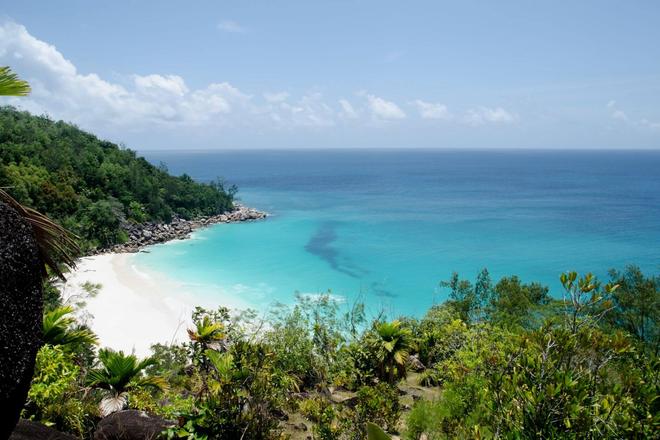
For an excursion, we can recommend the neighbouring island of Curieuse, which was historically designated for lepers. A large population of giant tortoises live here and during a small trek you will enjoy beautiful views, see countless crabs and also see the wild cashew nuts for yourself. Be sure not to miss Bird Island and Aride with its numerous bird colonies.
La Digue hides the world's most beautiful beaches and hungry geckos
In size, La Digue is ten times smaller than Mahé. However, this makes it easy to travel by bicycle, which you can rent at the port or at local hotels. The island used to be more of a sleepy village. Now, unfortunately, there are a lot more tourists coming here too, and although La Digue still has its charm, you hardly see the traditional ox-drawn carts anymore.
One of the most photographed beaches in the world, Anse Source D'Argent, lies here. Here, majestic granite rocks with deep grooves rise out of the turquoise water and palm trees lean over them. Many tourists arrive on the island in the morning and by about 4pm it is relatively crowded. So either pull over and head here early in the morning, or come here anytime in the early evening for an amazing sunset. The beach is in the L'Union reserve and there is a small fee to enter. The reserve provides sanctuary for giant tortoises, and you'll also find a coconut copra factory, a traditional boat factory, an old cemetery of early settlers and a fragrant vanilla plantation.
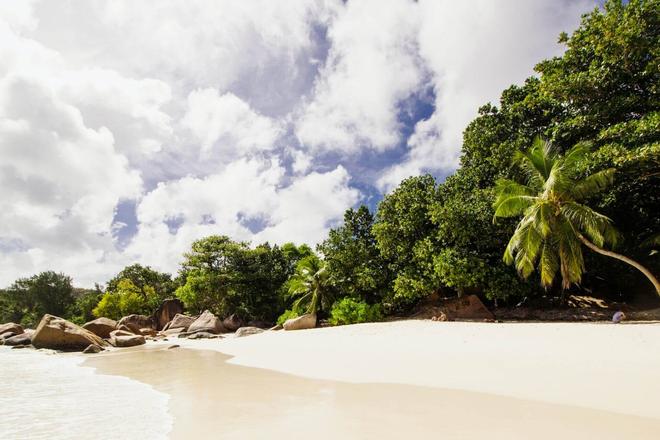
If you don't mind a little bit of exertion by bike and then on foot, you'll find the beaches of Grand Anse and the crowded Petite Anse and Anse Cocos on the southeastern tip of the island. Due to dangerous undercurrents, you won't be able to swim in the ocean here for most of the year, but you can at least take a dip. For other places, we recommend a guided trip south to Anse Marron beach (only accessible at low tide) and an excursion to one of the surrounding islands, such as snorkelling at Coco Island.
On La Digue you will commonly come across wild giant tortoises. It happens that a turtle will block the road and it's definitely not worth waiting for it to get out of the way. Just push it lightly on its shell, which will make it move (don't worry, it won't hurt it). Speaking of local fauna, definitely don't leave a peeled mango unattended. It's not just the calamari that love it, but the local geckos as well. We'd say they could even be tamed with it. We were honestly sharing with them after this discovery.
Less touristic islands
If a holiday on the main islands isn't enough, try one of the smaller inner or outer islands. These are more expensive options, but that's what keeps these islands charming and not overrun with tourists. Some of the more affordable inner islands that are worth spending at least part of your holiday on include Bird Island, Denis Island and Silhouette. Of the top islands, let's mention Felicité, Fregate and North.
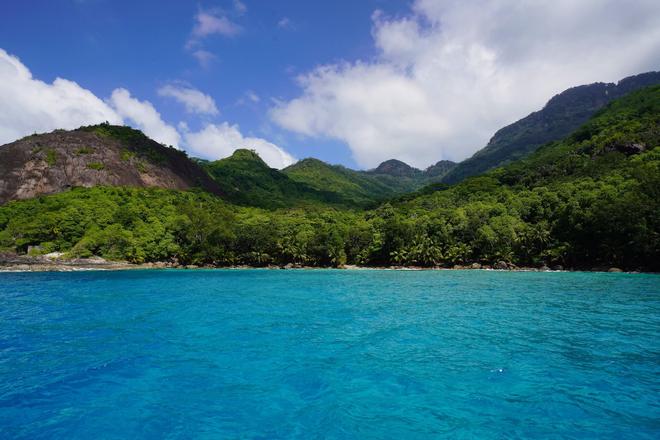
Our favourites, however, are the outer islands. Especially the islands located southwest of Mahé, namely Desroches and Alphonse. On Desroches you will find the new luxury resort Four Seasons. But there are cheeky crabs stealing the bathers' flip-flops. There are TOP dive sites within easy reach and snorkelling from the beach is very nice. Turtles lay eggs here regularly and given the magnificence of the island, we approve of their choice. Alphonse lies a little further out and is an oasis of calm, a paradise for keen fishermen and bird lovers. Fly fishing here takes on a whole new dimension.
We must end our list of highlights with the magnificent UNESCO-listed atoll of Aldabra, more than a thousand kilometres south-west of Mahé. It is one of the largest coral atolls in the world. It consists of four islands surrounding a lagoon. It is home to the world's largest population of 150 000 giant tortoises. The lagoon is a paradise for fish, and the mangroves here shelter many frigatebirds. You need a permit to enter, and unless you're a scientist, you probably won't get in. However, it is possible to visit similar atolls in this group – Cosmoledo and Astove. These are of particular interest to fishermen (fly fishing) and lovers of underwater life.
